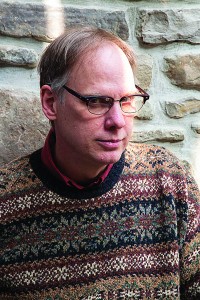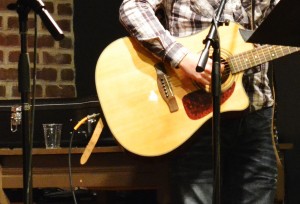In an average week students regularly see the campus publications The Houghton Star and The Drawing Board strewn about. To break the monotony about twice a semester a different type of publication hits the stacks, Houghton’s literary magazine, The Lanthorn. With its debut volume hitting campus in May of 1932, The Lanthorn has been an outlet for student writers to showcase creative work outside of the writing classroom. Current Lanthorn editor Ben Murphy, senior, compares the Lanthorn to other non-academic functions around campus; “the student juried art show allows any student to put their work out there [and] Java provides a venue for people to play their own music. We do the same sort of thing, I think.”
 Often run on a low budget, the Lanthorn publishes a range of creative writing, both poetry and prose, and artwork as well. And while the Lanthorn may have obvious appeal to both English and Writing majors, the Lanthorn accepts and encourages work from all majors, a tradition they’ve strived to maintain.
Often run on a low budget, the Lanthorn publishes a range of creative writing, both poetry and prose, and artwork as well. And while the Lanthorn may have obvious appeal to both English and Writing majors, the Lanthorn accepts and encourages work from all majors, a tradition they’ve strived to maintain.
With that in mind, the Lanthorn has served as a sort of jumping off point for writers to kick-start their careers. Current Academic Dean Linda Mills-Woolsey, vice president for academic affairs, and several of her editorial staff are all prime examples of writers that continue to benefit from their experience and involvement with the Lanthorn. Mills-Woolsey herself has published a range of work, mostly poetry, and a number of her group who first published in the Lanthorn went on to have writing careers.
Writing careers aside, the Lanthorn offers experience for those applying to graduate school and jobs outside of the professional writing sector; 2013 Lanthorn Editor alumna Hannah Hanover, added that “participation and publication in a college’s literary magazine or compilation is highly desirable when applying to graduate school, or even creative positions in the job market.”
While the Lanthorn has the potential to provide valuable professional experience for writers, according to Murphy, it provides an important outlet in offering anonymous publishing, “[it] allows for a safe space for emotions and narratives that may not jive with typical Houghton-friendly issues.” Moreover for students who, like Murphy, “think of words as [their] art,” the Lanthorn plays a major part in “providing a place for wordy-art.”
Like every longstanding publication, the Lanthorn has consistently undergone changes, and this year is no different. This year’s editors worked to “establish a recognizable symbol [marketing brand],” for the Lanthorn according to Murphy, and senior Abby Buckingham handling the design with the help of Caffeinated Creative Studios, in hopes to “better cement the magazine’s presence and identity in students’ minds,” according to Murphy.
Along with this redesign, the Lanthorn has shifted towards encouraging more prose works. “Some years the Lanthorn has been very poetry heavy,” said Murphy, who sees the turn towards prose reflecting his own work as a fiction writer, and added, “I imagine this sort of thing will shift along with whoever is the current editor.” As far as design goes, Hanover mentioned that she and her staff worked to “[bring] back a larger, fuller format for the bi-annual Lanthorn, complete with vibrant color photos and art.” Additionally, a special trend with the Candle has been publishing a “special feature” edition, last year’s featured staff writing and art, and this spring’s featured only flash fiction and haikus.
An enduring Houghton tradition, the next hurdle the Lanthorn faces is the digital age. As the number of college newspapers publishing online continues to rise, the question of the power of print lingers. Murphy weighed the pros and cons, saying, “I think the benefit to print is that we can leave them lying around campus for people to peruse and then leave behind…Also because the edition is selective (we publish probably around 30% of what we receive) I think the quality of work and satisfaction gained from getting in would certainly go out the window,” and on the other hand, “I think there could be something said for a digital version or counterpart of the publication, though it would take a more tech and design savvy editor than myself.”
With the technology debate unsettled, the Lanthorn will no doubt continue its tradition of publishing student work and serving as a true creative outlet for writers campus-wide.


